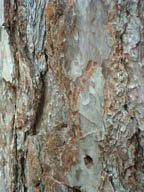Framing - what frame to choose?
Pollarded willows, charcoal and pastel in limed ash frame or black frame, framed it's about 3ft
Selecting frames is difficult. The frame can make or break a picture - but it also has to fit in with a buyers house.
I notice this makes for a huge difference in opinions on framing between the US, UK and the continent when discussing framing with friends. American friends always seem to go for dark dark wood, continental friends like more ornate frames, in England we tend to go for pale, minimalist framing - it so much depends on the surroundings in which they are to be hung as well as the image itself.
Originally I had framed the piece above in limed ash with an antique white (pale cream) mat/mount but wasn't at all happy with it. I hadn't thought enough about it. The drawing has a lot of darks with compressed charcoal as well as deep colour, is 'heavy' and the frame didn't stand up to it, seeming too pale and insubstantial. The pale limed ash, paler than in the photo, didn't echo anything in the image or match it's mood, which is does with the seascapes I do. I made the decision to go with black for the recent exhibition and liked it much better - it played up the drama of the winter light.
The limed ash goes really well with the seascapes, as does white. It's very easy to feel that framing must 'match' when hung together, no matter what the painting. Sometimes it's necessary to break away into something totally different for the paintings sake.
I think I'll definitely be using black again where it enhances colour and makes it sing against the darkness. What I'll do in future is limit framing to mainly the limed ash, black or white so that there aren't too many different elements going on.
I experimented with a black frame, digitally, for the recent still life and like the effect of black with the rich colour, enhancing the glow - one of the reasons I like black as the background to my blog.
Frames need to enhance the image and not compete. A frame that is too fancy or brightly coloured can mean that you are looking at the frame more than the image.
What do you think? What influences your framing? How do you frame?





Comments
I tend to favour narrow frames
and I like the mat/frame to harmonise with the picture.Sometimes, this means choosing coloured frames.
And the budget often means living with a less-than-perfect frame til I can afford to change it!(Budget constraints also see me buying frames from op shops and storing them.:-) )
it just cried out for more drama - it needs to be hung where it can glow alone!
This frame is narrow but the mat is quite wide - I did this digitally as I didn't want the hassle of unwrapping it from it's cocoon of bubble wrap
For this piece, it has to be the black mat and frame. It really sets off the image and gives it drama. Perhaps an inner 1/8 - 1/4 inch of pale blue to set off the water/sky and contrast with the black mat?
I painted the frame myself and need to do a little more so it would be possible before I finish it off.
I usually do the double mats too - they just look so much better.
Your painting has a lot more impact in the dark frame. I love the circular compositions you use.
I totally agree that they have to be well made, nothing spoils the work more than a badly made frame.
Personally, I never go bright Ian but I can see that it would be suitable for some work. I always want the frame to be a support and not compete - and for my current work it isn't part of the image.
I saw a wonderful Howard Hodgkin exhbition at the Hayward Gallery a long time back that just glowed against the grim grey concrete - and the painting on the frames worked well for him.